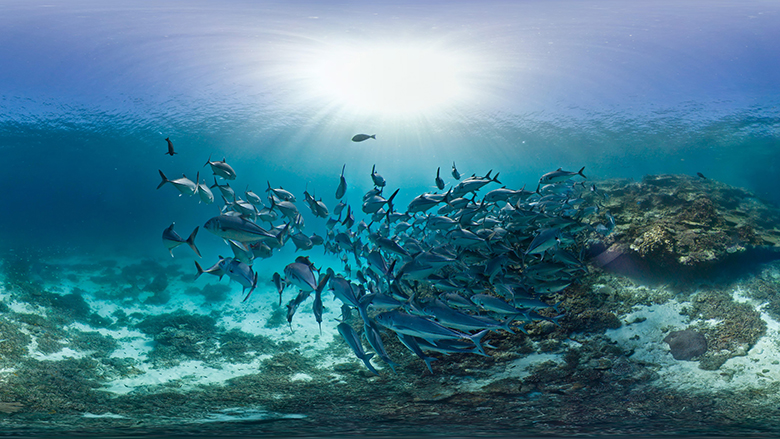
The Republic of Seychelles, an archipelago in middle of the Western Indian Ocean, is one of the smallest countries in the world. Collectively, the 115 islands of the Seychelles archipelago occupy a land mass of just 175 square miles but, offshore, the exclusive economic zone – that is, the area in which the state has jurisdiction over the protection and preservation of the marine environment – occupies over 540,000 square miles, or 3,000 times the land mass.
The blue economy
“We are tied to the ocean”, or so said John F. Kennedy, and perhaps none of us more so than the Seychellois, whose economy is based, almost entirely, on marine resources. According to the Bureau of National Statistics, in 2017, over 318,000 overseas travellers took a holiday in the Seychelles, no doubt attracted by the tropical climate, beautiful beaches and abundant marine life. The fishing industry, which produced over 40,000 tonnes of canned tuna in 2017, is another major contributor to the gross domestic product but, like the rest of the so-called “blue economy”, is vulnerable to the threat of climate change.
Climate change
Sea-level rise, of up to twelve inches by 2050, according to some climate scientists, is particularly relevant to the low-lying Outer Islands, many of which are only just above current sea level. Higher ocean temperatures, acidification and the decrease in the availability of carbonate ions in the water – which, in turn, lessens the structural integrity of organisms such as coral, molluscs and plankton – caused by the absorption of carbon dioxide, are also real threats to sustainable economic development using the sea and its resources.
Marine spatial plan
However, the government has implemented strategies to increase the resilience of the blue economy to climate change. The innovation began in 2016, with a deal in which £22 million of debt was bought, at a discount, by environmental charity The Nature Conservancy, in return for a commitment to a so-called Marine Spatial Plan. Eventually, the Marine Spatial Plan will cover the whole of the exclusive economic zone but, in February, 2018, the government announced that the first phase was complete.
Marine protected areas
Phase one of the Marine Spatial Plan included the creation of two huge marine parks, or Marine Protected Areas. The Aldabra Group – the most remote of the Outer Islands – was designated a ‘Marine National Park’ and the Amirates to Fortune Bank area was designated an ‘Area of Outstanding Natural Beauty’ under the National Parks and Nature Conservancy Act. Fishing, oil exploration and large-scale development, of any kind, are prohibited in these areas and phase two of the Marine Spatial Plan, which is already underway, will examine which, if any, economic activities will be allowed in future. Collectively, these new areas increase the total area under marine protection to over 80,000 square miles, or roughly 16% of the exclusive economic zone. The remainder of the exclusive economic zone is also in the Marine Spatial Plan, with a view to increase regulatory attention and future innovation to be completed by 2020.